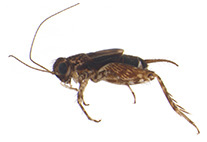Abstract
Cambarus (Puncticambarus) theepiensis is a stream-dwelling crayfish that appears to be endemic to the junction of the Cumberland Mountains with the Appalachian Plateau in West Virginia and Kentucky. Within this region, it is prevalent in the Guyandotte and Twelvepole basins of West Virginia, the Little Sandy River and Levisa Fork basins of Kentucky, and tributaries of the Big Sandy River shared by both states. The new species is morphologically most similar to Cambarus robustus and Cambarus sciotensis. It can be differentiated from C. robustus by its broad rostrum, with subparallel, thick-ened margins compared to the narrow, converging rostrum with reduced rostral margins of C. robustus.; larger areola width/length ratio (26 %) than C. robustus (22 %); and mottled color pattern compared to the monotypic color pattern of C. robustus. Cambarus theepiensis can be differentiated from C. sciotensis by the presence of a distinct lateral impression on the chelae compared to the absence of a lateral impression in C. sciotensis; constant thickness of the rostral margin compared to the gradation of rostral thickness in C. sciotensis; greater rostrum width/ length ratio in C. theepiensis (63.1 %) compared to C. sciotensis (57.2 %); and a central projection on the gonopod that is the same length as the mesial pro-cess, compared to a central projection that extends past the tip of the mesial process in C. sciotensis.

